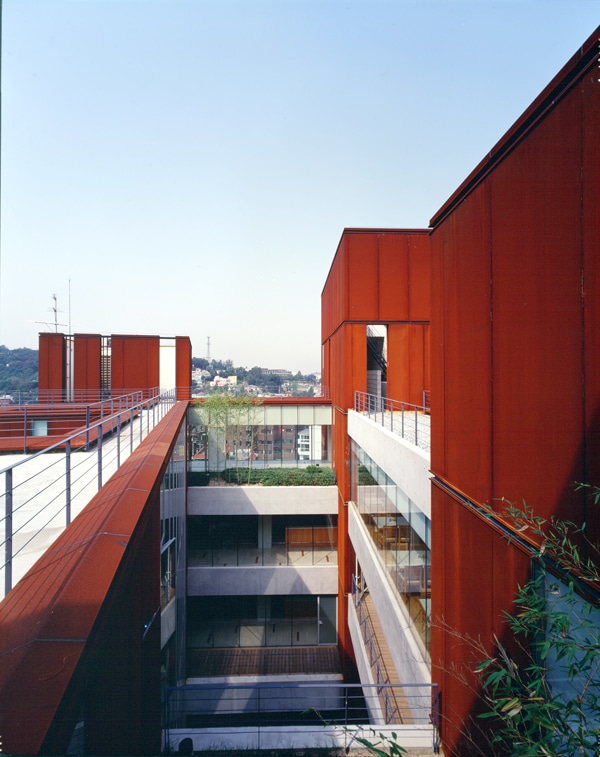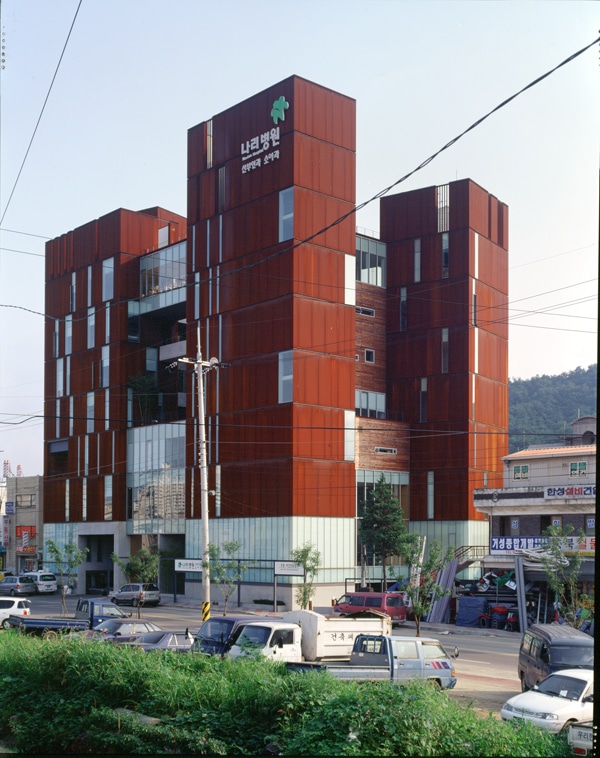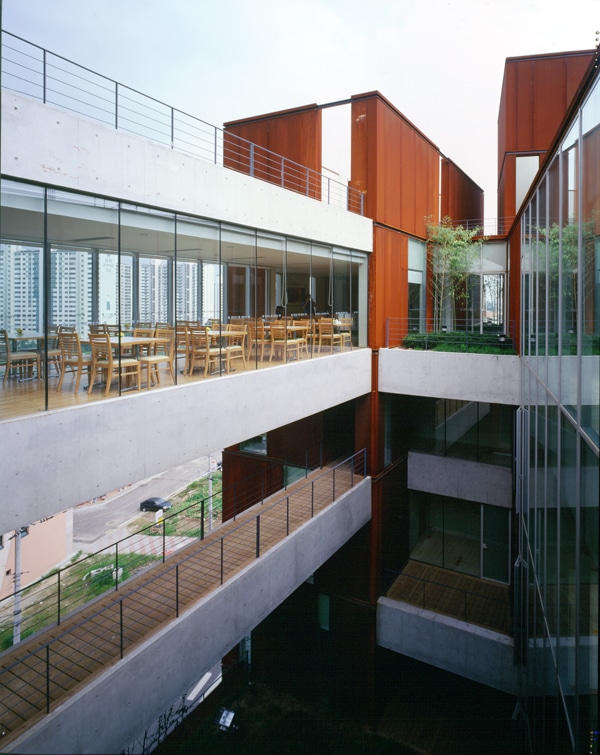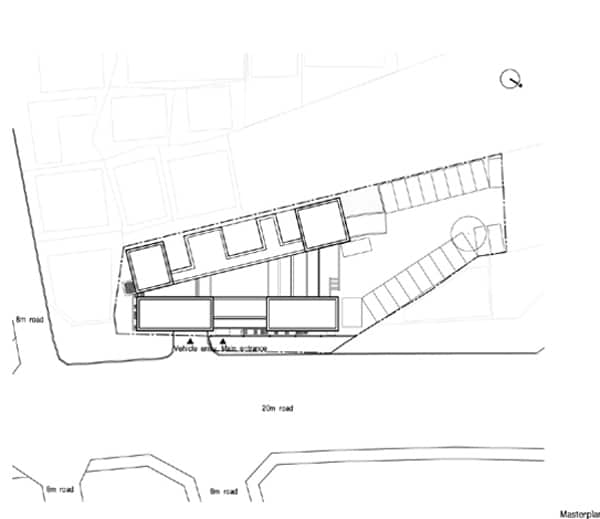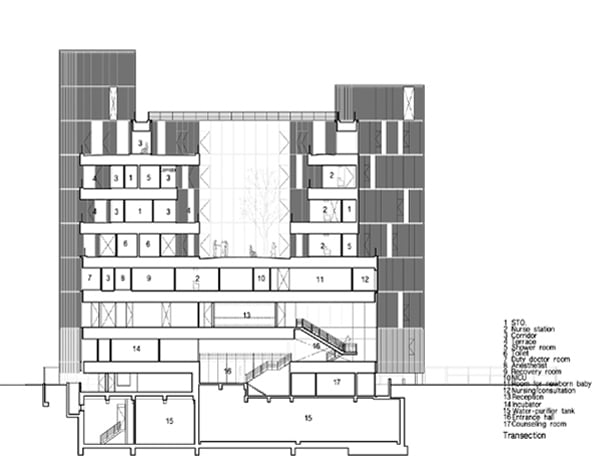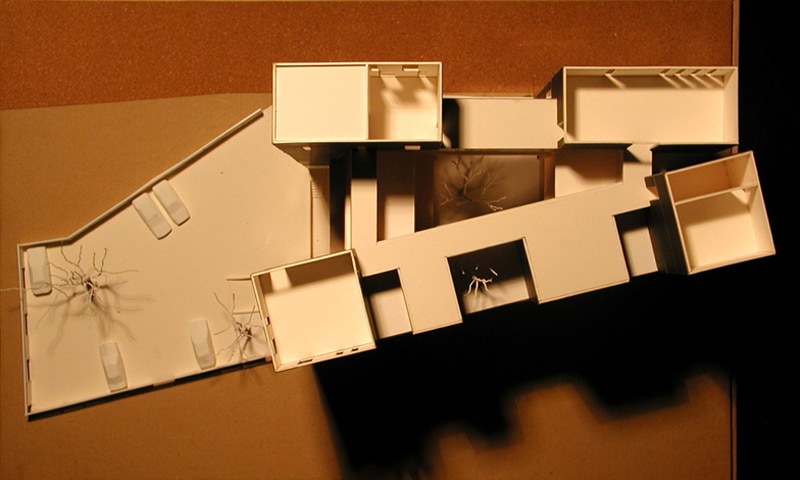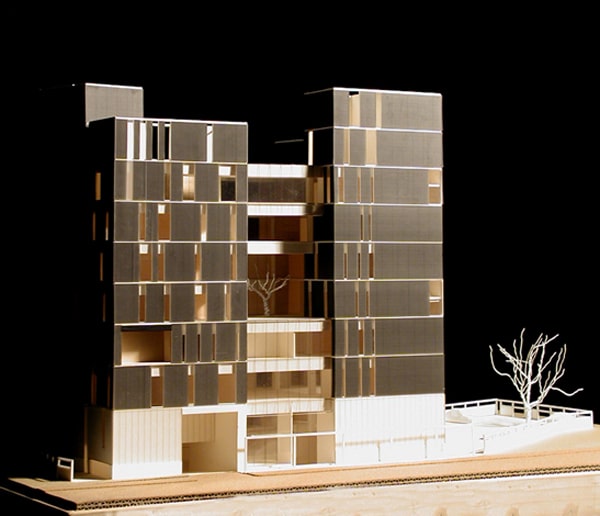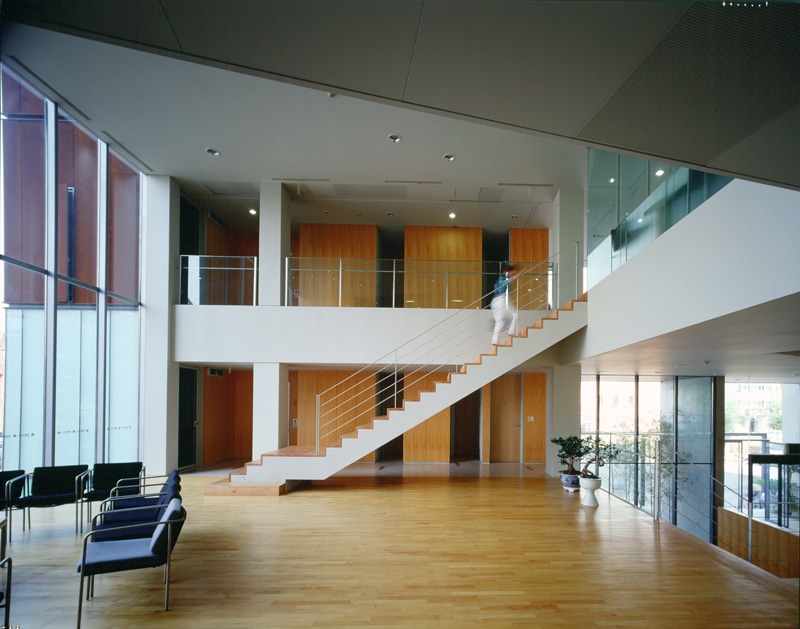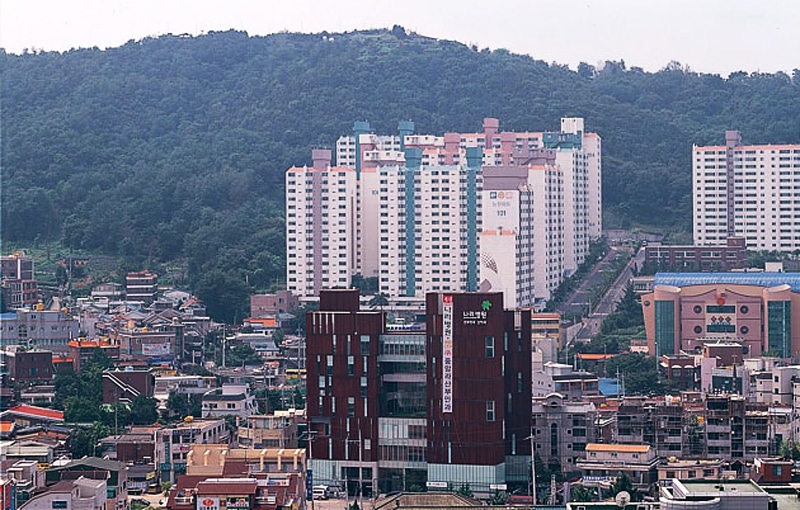Na & Lee Women’s Hospital
| 완공년도 | 2002 |
| 위치 | 김포 |
| 대지면적 | 1,351.79m² |
| 건축면적 | 572.63 m² |
| 연면적 | 3,427.77 m² |
| Mechanical engineer | 세아엔지니어링 |
| Electrical engineer | 우림 전기 |
| Scale | B1, 8F |
| Lighting design | 뉴라이트 |
| 완공년도 | 2002 |
| 위치 | 김포 |
| 대지면적 | 1,351.79m² |
| 건축면적 | 572.63 m² |
| 연면적 | 3,427.77 m² |
| Mechanical engineer | 세아엔지니어링 |
| Electrical engineer | 우림 전기 |
| Scale | B1, 8F |
| Lighting design | 뉴라이트 |
지난 93년에 완공된 영동제일병원 (현 영동 미즈메디 병원)은 주로 불임관련 분야에서 탁월한 업적을 이룬 산부인과 계통의 병원이다. 이 병원은 종래에 병원이 가지고 있었던 이미지를 바꾸는 데 나름대로의 계기를 만들었다고 지금도 평가 받고 있는 듯 하다. 창백한 백색에 무미건조하고 수용소 같은 구조를 가진 그런 종래의 병원을 온화하고 세련된 디테일로 호텔 같은 분위기를 만들었다는 것이다. 그러나 이런 평가는 이 병원의 공간구조를 장식적 차원에서만 본 결과일 뿐이다. 이 영동제일병원에서 이룬 최대의 성과는 진료시스템의 변화였다. 즉 종래의 진찰시스템은, 상담과 진찰이 한꺼번에 이루어지는 정해진 공간에서 의사는 움직이지 않고 앉아 있으며 환자가 상담의자와 진찰대를 오가는 그런 것이었다. 의사가 다른 환자를 상담하거나 진찰하는 사이에 같은 방의 구석에서 옷도 갈아 입어야 하는 환자들에게 프라이버시는 보장될 수 없는 시스템이다. 미국의 산부인과를 두루 견학하고 온 나 는 이의 문제점을 간파하고 나와 건축주인 원장은 새로운 시스템을 만드는 것에 합의하게 되었다. 즉, 상담실과 진찰실을 분리하고는 때로는 상담실 하나에 진찰실 둘을 한 단위로 묶어 두면 의사가 이 방들을 쉴새 없이 돌아다니고 환자는 조용한 혼자의 방에서 의사를 기다리는 구조이다. 의사의 노동력은 배가 되지만 그 만큼 진료수입이 보장되니 마땅한 처사이며 환자는 프라이버시가 적극적으로 보장되어 산부인과 같은 성격의 공간에 적절하다. 따라서 이 진료 유니트 방식이 공간구성의 기초단위가 되어 그룹별로 나뉘다 보면 소규모 대합실 기능이 나오고 이를 가운데 놓인 마당을 두고 적절히 분배한 결과가 이 병원의 쾌적하고 조용한 실내와 공간 구조이다. 이에 병원의 서비스에 확신을 가진 건축주의 세심한 배려에 의한 친절이 이 병원을 더욱 인구에 회자하게 만들었으며 지금도 이 병원은 산부인과 뿐만 아니라 크지 않은 병원건축의 새로운 전범이 되어 있다. 그 이후 적지 않은 수의 병원을 설계하면서 의사들의 사는 방식을 주목하게 되었다. 특히 항상 대기 상태에 놓일 수 밖에 없는 산부인과 의사들에게 병원이라는 장소는 어떻게 보면 그들 세계 전부라는 사실이다. 병원에서 환자에 대한 배려가 중요하다는 사실은 틀에 박힌 교과서이다. 그러나, 병원이라는 건축은 그 속에서 일상을 담는 의사나 간호사공간이라는 사실에 대한 인식이 나를 다시 병원에 대한 새로운 시각을 갖게 하였다. 환자가 위주인 병원, 이는 어디까지나 구호이며 모순이다. 병원은 환자에게는 비일상이며 의사와 직원에게는 일상인 것이다. 따라서 건축이 삶을 바꾼다고 믿는 우리 건축가에겐 의사들의 삶이 더욱 중요한 문제가 된다. 실험실 같은 무미건조하고 인공적 환경이 지배하는 곳이 아니라 병상과 진료실을 오가는 동안 밝은 햇살과 계절을 알리는 나무와 꽃을 보게 하고 드라마틱한 공간을 만들어 반복적인 생활을 하는 의사들의 일상을 끊임없이 자극하는 것이 보다 중요하다. 생명을 다루는 의사들에게 살아 있는 자연의 신비를 일깨우는 일이 얼마나 중요한가. 물론 환자에게도 그런 공간은 이 병원 속에 짧은 기간을 머무름에도 불구하고 이 병원에 대한 신뢰를 높일 것임에 의심의 여지가 없다. 그래서 변화무쌍한 공중의 외부 공간들이 곳곳에 만들어 졌고 이 하늘의 정원들이 만드는 공간의 형태가 이 병원의 조형을 결정지었다 외부 재료인 내후성강판이 변하는 모습은 생명의 또 다른 움직임으로 읽혀지길 원한다.
Youngdong Jeil Hospital (presently Youngdong Mizmedi Hospital), completed in 1993, is prominent for curing sterility. As its designer, we were proud that it became known for its contribution on reforming the image of medical institutions. It changed, so to speak, the usual look of a hospital—pale, white and flat, with jail-like structure—to one with moderate and refined details, sort of like a hotel.
But such praise still only grasps its space structure in terms of decoration. The biggest achievement of this hospital was in the way it innovated the system of medical treatments. Before, a patient was demanded to move between a consultation chair and a treatment bed which were usually situated in one room, while the doctor stayed in one place. Under this system, a patient had to change clothes in the same room while another patient was being examined. Protecting the patient’s privacy was simply out of the question.
After observing medical facilities in the United States, I came to the conclusion that a new system should be established, and the client of Na & Lee Hospital—its director—readily agreed. Rooms for consultation and examination are separated, and sometimes one consultation room and two examination rooms compose a unit. Doctors are required to move, but patients are not—the latter await the former in a room. This of course increases the doctor’s movement, but such new system is appropriate to an obstetrics and gynecology hospital which needs to secure the privacy of its patients, and also guarantees more income to it. These units become the basic components of space composition, and their grouping in turn generates small waiting rooms that are positioned around the center courtyard—this is how the comfortable and quiet spaces of the hospital is obtained. On top of these architectural features, the client also put priority in satisfying its patients with kind service. As a result, this hospital has become the model of not only obstetrics and gynecology clinics but also all kinds of middle-sized medical facilities. Designing some other hospitals afterwards, I came to focus on the lives of doctors. A hospital is the world itself for some doctors, especially obstetricians who are always standing by. It goes without saying that the care for patients is the most important thing in medical institutions, but it came to my realization that a hospital is also an everyday space for doctors and nurses. Hospital for patients—this is merely a slogan, and speaks only half of the truth. Whereas a visit to the clinic is an out-of-the-ordinary experience for most people, to staffs and doctors the hospital is where their daily activities occur. Therefore, to us architects—those who believe that architecture changes life—the life of doctors becomes a significant issue. It is important to stimulate them out of their daily routine in laboratory-like environment by presenting them dramatic moments, by inviting them to feel the bright sunshine and see the green trees and blossoming flowers. How meaningful it is to bring the vigor of nature close to doctors, who deal with life itself. Of course, it is obvious that a hospital should be a reliable place to patients, even if their stay within the building is relatively short. Hence various outdoor spaces were made in the upper levels, and the shape of the overall building was defined by the spaces of these aerial gardens. It is my hope that changing features of cor-ten steel—the finishing material of the building—will be understood as another representation of life’s movement.


